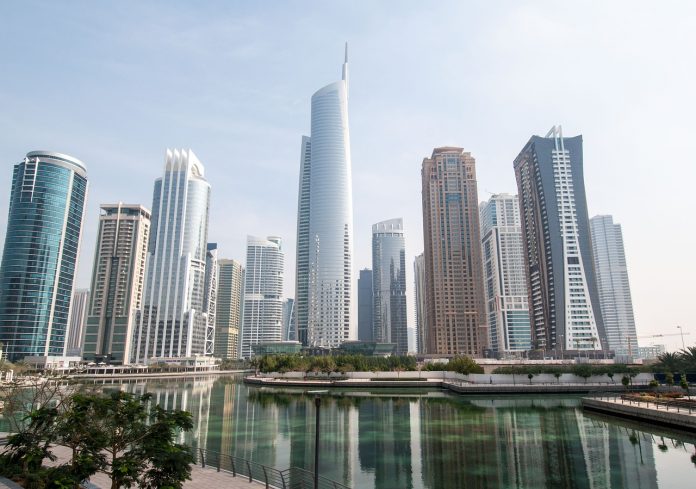
- Average apartment prices in Dubai declined 16.5% in Q3 2019 from Q3 2018, and villa/townhouse prices declined by 15% during the same period.
- Rental declines for apartments in Dubai averaged 15% and rents for villas/ townhouses similarly fell 12% in Q3 2019 from a year ago.
- Handovers in Dubai are expected to average between 5,000 and 7,000 units for Q4 2019.
Cavendish Maxwell, a leading property consultancy and chartered surveying firm in the Middle East, released its UAE Property Market Report for Q3 2019, containing key data and trends for Dubai, Abu Dhabi and the Northern Emirates. The report provides comprehensive insights on the health of the UAE’s property market as a whole, covering the residential, commercial, retail, hospitality and industrial sectors. The report was compiled by the firm’s in-house Strategic Consulting and Research team, drawing on proprietary data from its real estate intelligence platform, Property Monitor, and in collaboration with its extensive client and partner portfolio.
Commenting on the report, Aditi Hariharan, Senior Consultant, Strategic Consulting and Research at Cavendish Maxwell, said:
“A prolonged softening in prices and rents has made real estate more accessible to and affordable for owner occupiers and tenants. Supply continues to provide direction to prices and rents in Dubai and will do so as more projects materialise in the upcoming quarters. However, with the establishment of the real estate planning committee by His Highness Sheikh Mohammed bin Rashid Al Maktoum, a balance between demand and supply is expected to be achieved, improving projects’ value proposition and boosting confidence in the sector. The positive impact of the move is already evident with real estate transactions in Dubai more than doubling since the announcement of the committee.”
Key market insights
The Q3 2019 UAE Property Market Report from Cavendish Maxwell revealed several key insights and trends during the quarter, which are expected to hold true for the rest of 2019.
Continuing from the previous quarter, average sales prices and rents softened across most communities in Dubai in Q3 2019. Average apartment prices declined by 16.5% over the 12-month period from Q3 2018 to Q3 2019 whilst average villa/townhouse prices declined 15% during the period. Rental declines for apartments in Dubai averaged 15%, whilst villas/ townhouses registered a 12% fall during Q3 2018 to Q3 2019. Price declines in Abu Dhabi were slightly less steep than Dubai, averaging 15% for apartments and 12.7% for villas/townhouses from Q3 2018 to Q3 2019. The average annual rental decline for both apartments and villas/townhouses was 13.7% for the same period. The Northern Emirates continue to be impacted by falling rentals and sales prices in Dubai and Abu Dhabi. Supply remains the primary driver for price declines with developers attempting to entice buyers with attractive payment plans.
Office rents continued their decline into the third quarter with landlords settling on lower effective rates and providing incentives. In Q3 2019, businesses have continued to restructure their operations and limit exposure to real estate by consolidating multiple offices spaces into one. The office market in the capital saw rents decline 2-3% on a quarterly basis on muted interest from the oil and gas sector which is one of the bigger tenants. Due to Dubai’s oversupply and rental climate, rents in the Northern Emirates have also been under pressure.
In the industrial segment, landlords are having to align price points with occupier budgets as supply continues to outweigh demand. As a result, an increasing number of transactions continued, despite vacancy levels still rising. In Abu Dhabi, the Khalifa Industrial Zone Abu Dhabi (KIZAD) has waived charges for over 75% of its services whilst lowering fees for many of the other services. Warehouse lease rates in Ajman and Ras Al Khaimah ranged between AED 15 and 25 per sq ft, proving to be competitive alternatives to Sharjah where rates were slightly higher in the range of AED 15 to 30 per sq ft.
Extending the trend of the previous quarter, occupancy and rents continued to fall in most locations and across retail categories in Dubai. Retail landlords are prepared to incentivise new entrants with service charge waivers, revenue share agreements and capital expenditure contributions if they believe that these measures would lead to longer lease terms from credit-worthy tenants. Abu Dhabi saw the opening of the extension of The Galleria Al Maryah Island which had over 400,000 people visit in the first few days post the launch. Recent deals by developers suggest confidence in the retail sector of Abu Dhabi.
The rise of the sharing economy and an increasing proportion of millennials and Gen Z in the consumer mix has seen higher demand for short-term rental accommodation and holiday homes. In Dubai, hotel occupancy declined 1.9% in January-August 2019 versus the same period a year ago, with the decline most evident in the luxury sector. On the other hand, occupancy rates in hotels and resorts across Abu Dhabi showed a marginal increase in January-August 2019 versus a year ago. Occupancy, Average Daily Rates (ADRs) and Revenue Per Available Room (RevPAR) for hotels in the Northern Emirates of Ras Al Khaimah and Fujairah were lower in January-August 2019 versus the year ago period.




































